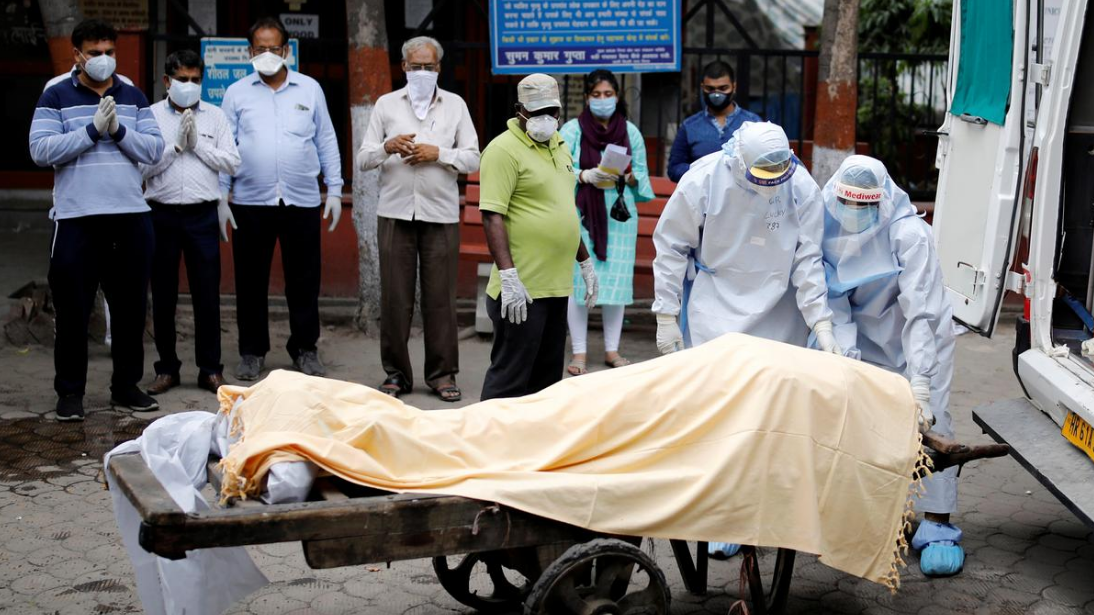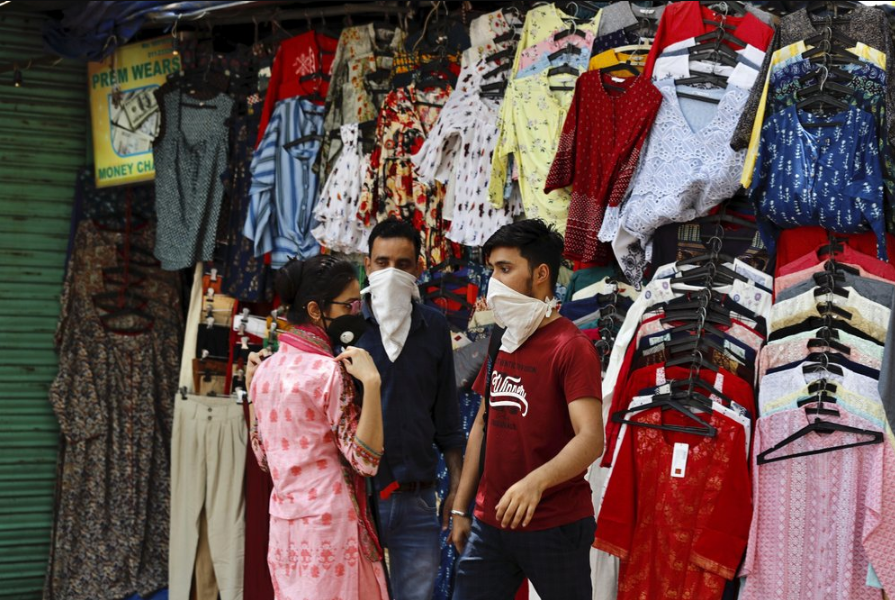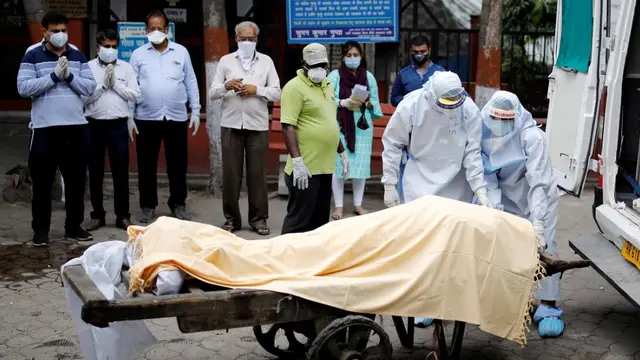
Health workers cover the body of a man who died from COVID-19 as relatives pay their respects at a crematorium in New Delhi, India, June 4, 2020. /Reuters
The city of New Delhi on Sunday ordered many of its hospital beds to be reserved solely for residents of the Indian capital, as the number of COVID-19 infections continued to surge.New Delhi city alone has registered more than 10percentof the total number of cases.
India on Sunday registered 9,971 new coronavirus cases, taking its tally to 246,628 cases, with 6,929 deaths. The case numbers now lag behind only the United States, Brazil, Russia, the United Kingdom and Spain.
"Delhi is in big trouble ... corona cases are rising rapidly," state Chief Minister Arvind Kejriwal said in a video message on Twitter, where he announced that private and city government-run hospitals will be reserved for Delhi residents.
"If we open Delhi hospitals for patients from all over, where will Delhi residents go when they get infected with coronavirus?”
Typically about 60-70percentof the patients admitted to hospitals in Delhi travel from other states to get treatment, as the city's hospitals are among the best in the country.
A Delhi government coronavirus mobile app showed the city of more than 20 million people had 8,049 COVID-19 beds, but more than half were already occupied. Of the 60 hospitals, 11 had no beds available, the app showed on Sunday.
The Delhi city government has issued an order saying hospitals must admit every patient from the city with coronavirus symptoms, following complaints from some people on social media that people were being refused treatment.
How severely is India hit by the coronavirus?

A woman shops for clothes at the Janpath market in New Delhi, India, June 1, 2020. /AP
Back to normal
Although cases are still rising, India is easing its lockdown rulesout of economic concern. According to official data released last week, the country's unemployment rate rose to 23.48 percent in May. However, the Center for Monitoring Indian Economy, a Mumbai-based think tank, said it stands at 27.11 percent as of the week ended on May 3, up from the under seven percent before the start of the pandemic in mid-March.
The think tank said the rate is the highest in urban areas, which at 29.22 percent has the most red zones due to the coronavirus cases compared to the 26.69 percent in rural areas.
"It's certainly time to lift the lockdown," Gautam Menon, a professor and researcher on models of infectious diseases, told BBC. He said, "Beyond a point, it's hard to sustain a lockdown that has gone on for so long – economically, socially and psychologically."
As India's growth forecast tumbled to a 30-year-low, many have said that the country needs to open up quickly and that any further lockdowns would be devastating. In May, global consultant McKinsey echoed the opinion, saying India's economy must be "managed alongside persistent infection risks."
According to Indian officials, the initial purpose of the lockdowns is to delay the spike in COVID-19 cases so the nation can get ready by putting health services and systems in place when the spike comes. However, enormous challenges remain and shortages persist.
It seems that Indians have reached the consensus that the government has bought as much time as possible. Some believe it's time to revive the economy since the choice between a virus that does not appear to be wreaking havoc as yet and a lockdown that has forced millions of Indians out of jobs seems obvious.
( With input from agencies)
 简体中文
简体中文

